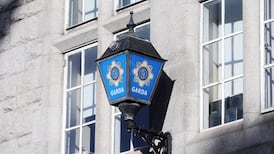A little-cared-for portrait which once used to "plug gaps" on the walls of Dublin's Newbridge House may have unlocked the secret surrounding William Shakespeare's sexual orientation.
Its subject, for centuries taken to be an obscure female aristocrat, has been identified as the playwright's patron, Henry Wriothesley, Third Earl of Southampton. Believed to be the "fair youth" to whom Shakespeare's early sonnets are addressed, Wriothesley is wearing long tresses, lipstick, and earrings, and is posing in what has been described as "a somewhat camp gesture".
The discovery has fuelled a long-running debate on whether the playwright and patron were involved in a sexual relationship, and whether Shakespeare himself was gay. Crucially, the portrait has been dated at around 1592-94, the period during which Shakespeare wrote and published two poems dedicated to the teenage earl.
Dublin-born Alec Cobbe, who made the discovery, noted the earl was depicted in later portraits in "a more macho style". According to one school of thought, Wriothesley became embarrassed at Shakespeare's poetic tributes to him and broke off their friendship/relationship.
The earl is widely regarded as the character Shakespeare ambiguously called "the master mistress of my passion" in his notorious 20th sonnet. The "fair youth" is described therein as having "a woman's face . . . a woman's gentle heart", and "an eye more bright than theirs".
The identity of the sitter in the portrait had been disguised by a handwritten note on its back, reading: "Lady Norton". The note had been written by Mr Cobbe's ancestor, Rev Charles Cobbe, who moved to Ireland from England in 1717 and became Archbishop of Dublin.
Mr Cobbe believes the Lady Norton in question was Lady Elizabeth Norton, a great-granddaughter of Wriothesley, who bequeathed the painting to the Cobbe family. Because of its misleading label, the portrait was relegated to the remote "passage" area of Newbridge House, the north Dublin mansion built by the archbishop in the 1740s, and now owned by Fingal County Council.
"It was a picture we used to plug gaps on the staircase and elsewhere. We regarded it as rather dull," said Mr Cobbe.
The painting has since been moved to his more recent residence of Hatchlands Park in Surrey, and it was there 12 years ago an art critic remarked to him the sitter was "no lady". However, it was only after an exhibition, featuring the portrait, ended earlier this year that Mr Cobbe realised he had seen "that extraordinary hairstyle" before, namely in a 1603 portrait of Wriothesley which he had come across while researching his family tree.
Specialists have since examined the painting, and have confirmed it is the earliest existing portrait of the earl.
Mr Cobbe rejected the suggestion that Wriothesley was dressed in drag, noting the costume was one typically worn by men in the late 16th century. He said the posture was "poetic rather than camp". However, "there is no doubt he is a very effeminate looking chap. I feel one can draw one's own conclusions." One Shakespearean scholar in the UK described the portrait as of considerable historical interest as it possibly showed the face the playwright fell in love with.








